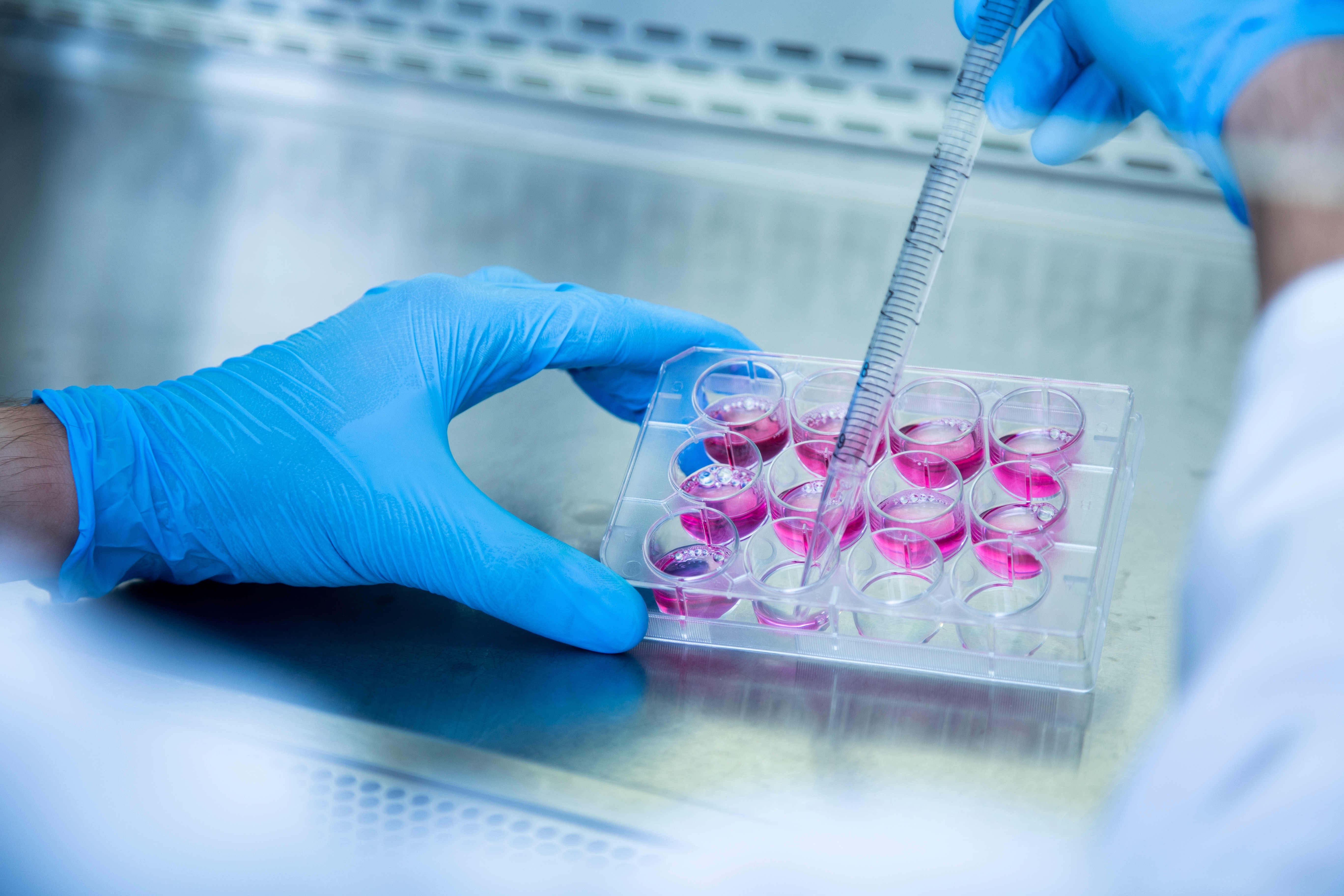
2024 HDBuzz Prize: Beyond nerve cells – who are the other players in the HD brain?
We're proud to announce Jenny Lange as a 2024 HDBuzz Prize winner! Our brains are made up of many types of cells that play different roles in the changes caused by HD. This study dives into a star-shaped cell called astrocytes and their role in HD.
A new study led by researchers from Columbia University used postmortem brain samples to show that a special type of brain cell, called astrocytes, may play a role in how certain nerve cells are lost in Huntington’s disease (HD). This could have important implications for how we understand disease progression as well as for the development of new therapeutics that could target these cells specifically.
Star-shaped astrocytes are important for brain health
Nerve cells are responsible for sending signals across the brain that control our behaviour, mood, and help with communication between brain and body. These cells are the most affected in HD and are slowly lost as the disease progresses.

Besides nerve cells, our brain is made up of several other types of cells, including astrocytes. Astrocytes play an important role supporting nerve cell health and help with information processing.
Like nerve cells, and actually most cell types in our bodies, astrocytes also have the huntingtin gene switched on. In people with HD, this means they make the toxic huntingtin protein.
Several studies have indicated that this might cause astrocytes to not work as well in HD brains, including changes in how they interact with nerve cells. These changes are thought to contribute to HD progression. This new study sought to figure out exactly what changes are happening in astrocytes in HD.
Astrocytes: one size does not fit all
Researchers have long known that in people with HD, nerve cells in specific areas of the brain are more vulnerable to dying, a process called neurodegeneration. In this study, the authors looked at how genes are switched on or off in different regions of the brain using postmortem tissue. They found that differences in gene levels from healthy and HD donors were linked to specific brain regions and certain nerve cell types.
“Besides nerve cells, our brain is made up of several other types of cells, including astrocytes. Astrocytes play an important role supporting nerve cell health and help with information processing.”
Across different brain regions, astrocytes are also not one uniform cell type. They are named for their star-like shape, and like the stars in the sky, there are many distinct types of astrocytes. These differ in shape, structure, and the roles they play in the brain, including how they interact with other cells. The researchers in this study identified several astrocyte subgroups in brain regions that are either vulnerable or resilient to neurodegeneration in HD.
Interestingly, a subgroup of astrocytes were present in HD brains, but not unaffected control brains in a region called the caudate nucleus, an area where nerve cell death is especially high in HD. This highlights that not only nerve cells are affected in vulnerable brain regions, but also that astrocyte subgroups are changed.
The presence of this subgroup of astrocytes meant that astrocytes that have specific functions were replaced, which could change how they interact with nerve cells in this region. Looking at different stages of disease progression, certain clusters of astrocytes were either increased or reduced. This could affect how these astrocytes might support nerve cells or maybe even contribute to their loss.
How do changes in astrocyte functions affect nerve cells?
Astrocytes have many different roles, but one of the most important ones is in brain metabolism. These cells help manage and process nutrients that nerve cells need to stay healthy and to function properly. These nutrients include different types of sugars, cholesterols, and fats.

There are many different kinds of fats and fat-like substances, also called lipids, in the brain. Previous research studies have identified changes in the amount of specific types of fats in HD brains compared to controls. The researchers in this study found that the amount of several types of fats tracked with disease severity in HD brain tissue.
But how do different lipids affect nerve cells? To test this, healthy nerve cells were grown in a dish and exposed to a stressor alongside the specific lipids identified in the study. In the context of cell stress, these appeared to be toxic and caused nerve cells to die.
An outstanding question is whether and how astrocytes contribute to the changes in lipid expression. It is not yet known whether astrocytes play a role in regulating those specific lipids. However, as astrocytes are the cell type that takes up and secretes the majority of lipids, it is important that future research establishes whether astrocytes contribute to nerve cell loss through changes in lipid metabolism.
Astrocytes: good guy or bad guy?
This study found a specific type of astrocyte that there are lots of in brain regions less affected by HD but very little of in the most affected areas of the brain. They found that this type of astrocyte has a particular group of genes switched on more than normal. These genes encode a type of protein called metallotheioneins.
“A lot of the findings from this study rely on human postmortem brain tissue and would not have been possible without organ donation. It’s the generous and selfless contribution that individuals make, that allows research like this to be possible.”
The metallotheionein proteins help to protect cells from a damaging type of stress, called oxidative stress. This type of stress is caused by an imbalance of ‘bad’ reactive molecules and ‘good’ antioxidants. Increased levels of oxidative stress have been reported in HD and are known to damage cells.
Astrocytes are thought to play a key role in protecting nerve cells from damage caused by oxidative stress. The researchers in this study identified a specific gene, metallotheionein-3, which was associated with a neuroprotective astrocyte subgroup. When nerve cells were exposed to toxins in the laboratory, astrocytes that expressed higher levels of this gene could protect these nerve cells from cell death.
A new modifier of HD?
In HD, the age of disease onset generally tracks with the number of CAG repeats in the huntingtin gene, where more CAG repeats lead to an earlier age of onset. However, folks with the same CAG number can get symptoms earlier or late in life. This is partly due to genetic modifiers; small changes to the DNA letter code in other genes that can also affect the age of onset of HD symptoms.
In this study, researchers looked across 390 people with HD to see whether they could find genetic signatures in the metallotheionein-3 gene that tracked with the age when symptoms first appear.
Three small genetic signatures appeared to be linked to a later onset of symptoms in people with HD, whilst two other genetic changes appeared to increase how much this gene is switched on in a specific brain region, the prefrontal cortex. This highlights the potential clinical relevance of this gene and may represent a new way to target astrocytes therapeutically by designing drugs to change the expression of the metallotheionein-3 protein.

Astrocytes – a potential therapeutic target in HD?
The majority of cells lost in HD are nerve cells, but from studies like this, we are learning more about how other cell types and their functions are affected in the HD brain. The brain is incredibly complex, and by understanding more about other cells like astrocytes, we also learn more about how changes in cell-cell interactions may lead to neurodegeneration.
Unravelling the intricate relationships between nerve cells and astrocytes could be essential for developing effective therapies for HD. I like to think of the brain as an orchestra, where all instruments need to play well together. As such, it’s not sufficient to just target one part such as nerve cells and therapeutics need to target all cells affected by HD.
A lot of the findings from this study rely on human postmortem brain tissue and would not have been possible without organ donation. It’s the generous and selfless contribution that individuals make, that allows research like this to be possible.
Learn more
For more information about our disclosure policy see our FAQ…


